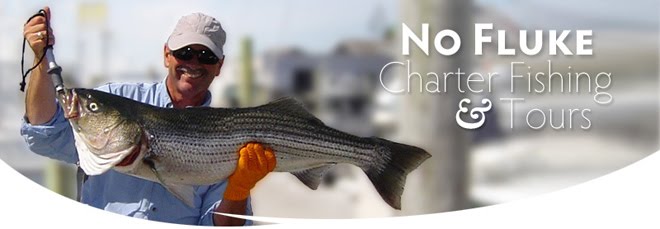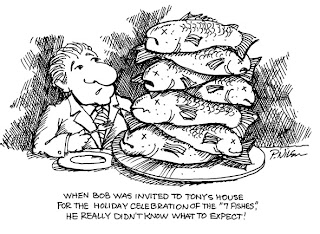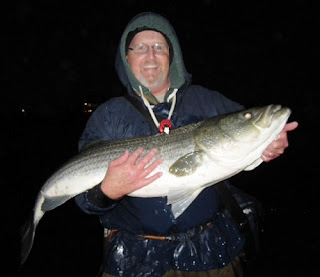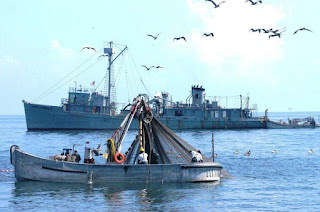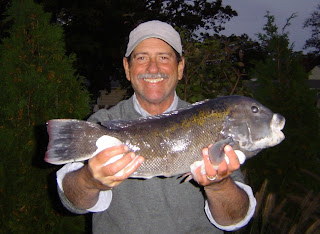 What a difference a year makes… Francis Fleet mate Ted McDermott fillets cod fish for passengers on a January 1, 2011 cod fishing trip. This year (1/1/2012) we have a new cod fillet law in place.
What a difference a year makes… Francis Fleet mate Ted McDermott fillets cod fish for passengers on a January 1, 2011 cod fishing trip. This year (1/1/2012) we have a new cod fillet law in place.New cod fillet law in effect January 1
We have a new recreational cod fishing fillet regulation that takes effect January 1, 2012. The minimum fish size is the same at twenty-two inches (22”), however, no angler shall possess a cod fillet measuring less than fourteen inches (14”) and the fillet must have at least two (2) square inches of skin left intact. The skin will help assist enforcement authorities identify the species. This means that if you fillet at sea you need to keep some skin (at least two square inches) left on the fillet.
The new law pertains to fish caught within “this state or otherwise”. “Otherwise” means that if you catch fish in federal waters outside the three mile limit, like at Cox’s Ledge (the popular cod fishing grounds off Rhode Island), and bring it back through Rhode Island waters or back to a Rhode Island port the cod fish regulation applies.
Both support and criticism of the new fillet law has come from private anglers and the charter/party boat industry.
Those opposed to the new fillet law say it will not stop the taking of undersized fish occurring offshore at popular fishing grounds where vessels from Montauk New York and other out of state party/charter boasts and private anglers keep undersized fish then fillet at sea and return to other than Rhode Island ports.
Rick Bellavance, president of the Rhode Island Party & Charter Boat association said, “Filet laws are not the solution. They are not going to stop people from taking undersized fish, what is needed is enhanced enforcement.”
Steve Medeiros, president of the Rhode Island Saltwater Anglers Association (RISAA) said, “Personally, I'm against it. For the past several years DEM enforcement has proposed a total fillet law in the state. While I was on the fisheries council I helped to defeat it time after time. This time it's about out of state charter and party boats fishing on the cod stocks south of Block Island. Reportedly they keep everything, including all undersized fish, fillet them on the spot, then cut back to Montauk. If caught with only fillets there is no proof to charge them with undersized fish.”Medeiros continued to say that he understands the new laws intent but was concerned that it would lead to fillet laws for all species. He said, “…I fear this will be used to open the door for an across-the-board fillet law. I'm not on the Council (Rhode Island Marine Fisheries Council) anymore so I can only fight from the audience.”
However others feel the fillet law will have a positive impact on the fishery. Dick Pastore, a noted long time Rhode Island recreational angler and fisheries advocate said, “ I’m probably a lone voice here but I don’t have any problem with a total fillet ban on the water… and lastly, a fillet ban will deter people from taking shorts. “
Brian an avid recreational angler on the RISAA blog said, “I believe it is a very good solution. It's also a lot better than not being able to clean fish at sea. I can't think of a better way for DEM to enforce limits on fish. It's been like that for years on the west coast and it keeps people honest and allows DEM to do their job.”
When advocating for the filet law, Captain Frank Blount, owner of the Francis Fleet party boats, said, “I was the one who recommended this fillet law and … support (the) option that would allow filleting of cod at sea but with fillets equal to the a specified size. Fourteen inches, if that translates to the minimum size fish (of 22 inches)”. Blount advocated for the law to prevent private anglers, party and charter boats from taking undersized cod and then filleting them at sea with no minimum size.
The new regulation becomes effective this week, January 1, 2012 and will remain in effect through June 30, 2012. The hope is that DEM will assess the effectiveness of the new fillet law and reconsider whether or not we should continue to have one. The new law it its entirety is as follows.
2.22.2 – Cod – Recreational Harvest
7.22.2 – 1 Minimum Size – No person fishing recreationally shall land or possess any cod measuring less than twenty-two inches (22”) total length, or any cod fillet measuring less than fourteen inches (14”) in total length, whether caught within the jurisdiction of this State or otherwise.
(a) Filleting of Cod – The fillets or cleared cod (head and tail removed) shall measure at least fourteen inches (14”) in length, and each fillet shall have at least two (2) square inches (5.1 square centimeters) of skin left intact to assist in species identification.
(b) This section shall remain in effect through June 30, 2012.
Who is fishing for cod?
The Seven B’s party boat (80 feet) out of the Port of Galilee, Narragansett, RI will be sailing for Cod fish this week December 28, 29, 30 and 31. The boast leaves the dock at 6:00 a.m. and return at 3:30 p.m. Cost for the tip through the end of this year is $85 per person. Call 401.789.9250.
The Francis Fleet vessels will be fishing this week too. They have been catching black sea bass to five pounds as well as scup and blue fish with cod mixed in. The Francis Fleet runs cod fishing trips from 7:00 a.m. to 4:00 p.m. on Monday, Wednesday, Friday, Saturday and Sundays. The cod fishing trip rate is $85 per person until 12.31.11. Rates after January 1 are to be determined. Visit www.francesfleet.com or call 1.800.662.2824.
